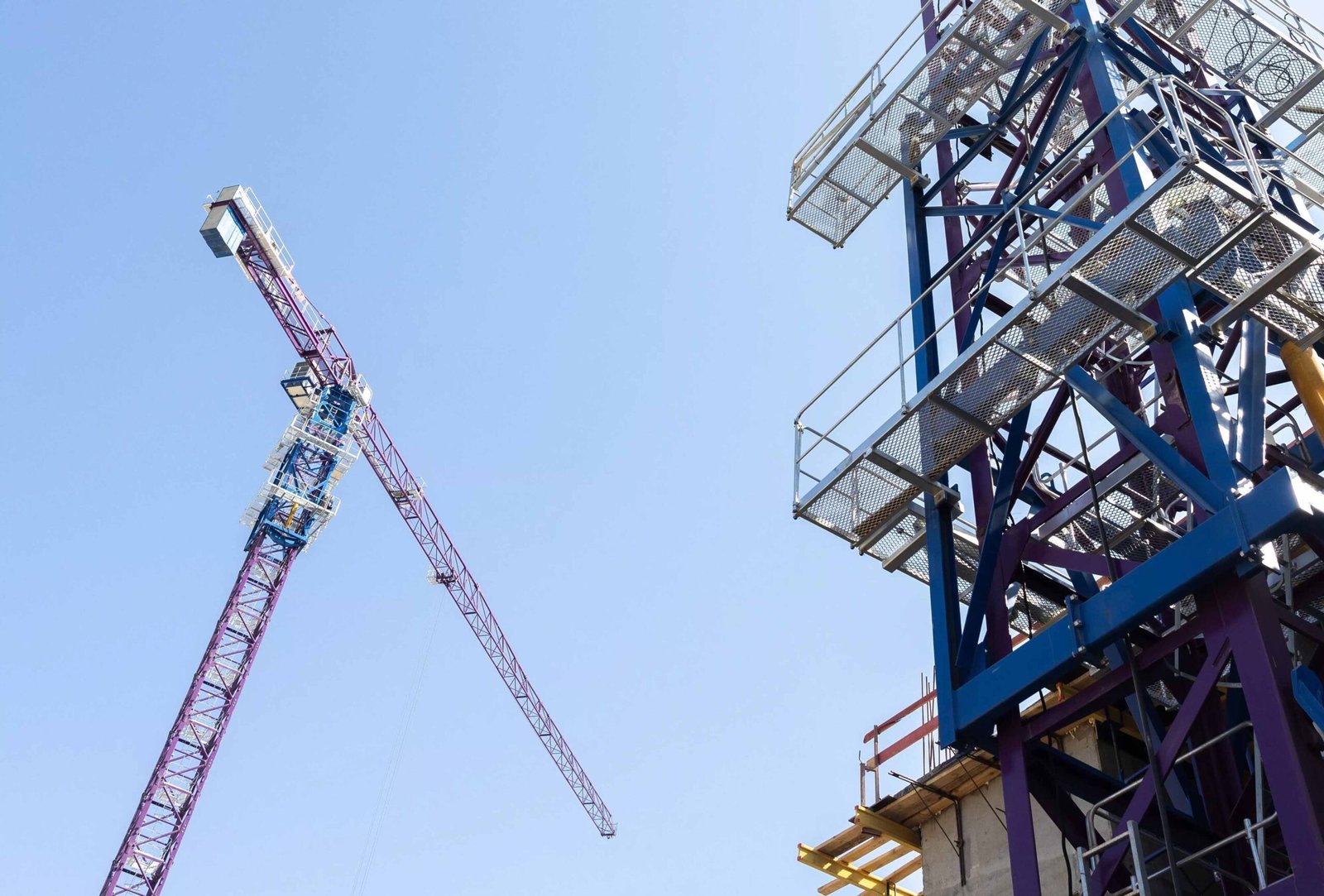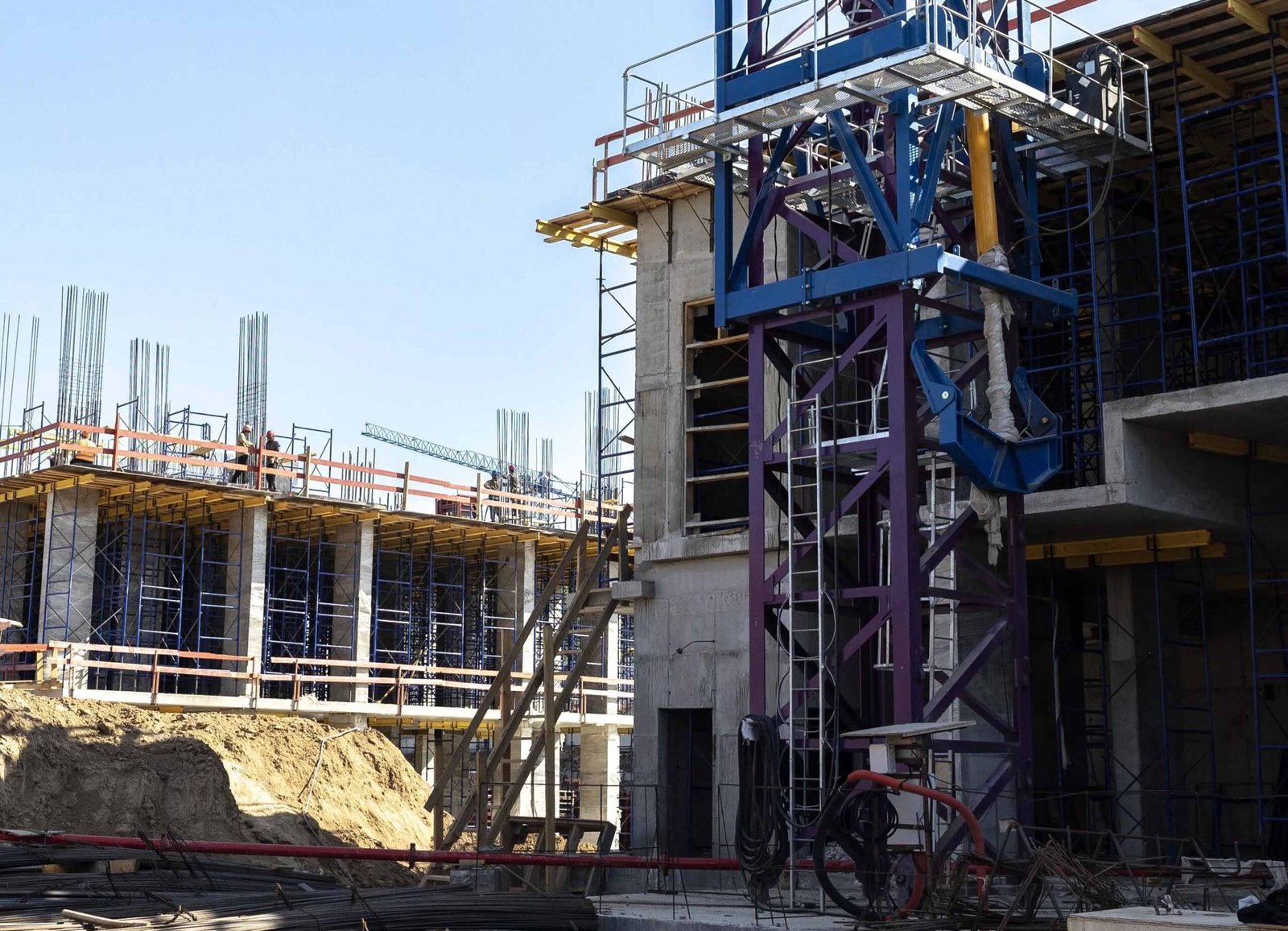
Raising a construction crane, particularly a tower crane, is a carefully orchestrated process that allows it to reach the necessary height for lifting materials and constructing buildings. The process involves a combination of mechanical systems, precision planning, and coordination.
Raising a construction crane involves a combination of climbing1, lifting, and hydraulic systems. The crane "climbs" as new sections are added to its structure.
Understanding how cranes are raised on a construction site reveals the complexity of crane operations and why cranes are essential in construction projects.
How Do Construction Cranes Go Higher?
Construction cranes, especially tower cranes, increase their height through a process known as "self-climbing2." A hydraulic system allows the crane to raise itself by adding more tower sections, which are lifted into place by the crane itself or a smaller crane. This method enables cranes to grow taller as the building progresses.
Construction cranes get higher through a self-climbing mechanism, adding sections as the building grows. This process is typically powered by hydraulics.

The Mechanism Behind Raising a Crane
- Hydraulic Jacking System3: The crane uses a hydraulic jack to lift itself. This system pushes the base up, allowing new sections of the tower to be inserted.
- Adding Sections: The crane’s tower is extended by adding new sections, which are lifted by the crane’s own mechanism or an auxiliary crane.
- Reaching Required Height: As the crane climbs, it is positioned higher and can continue lifting materials at greater heights to match the building’s progress.
How Do Construction Cranes Not Fall Over?
Crane stability is achieved through a combination of counterweights, a solid base, and precise engineering. Tower cranes are mounted on a concrete foundation, often bolted into place to ensure stability. The crane’s counterweights balance out the weight of the load being lifted, preventing tipping.
Construction cranes remain stable due to counterweights, strong foundations, and a design that prevents tipping under load. The crane's structure is crucial for balance.

Stability Measures to Prevent Crane Tipping
- Counterweights4: These are large weights placed on the opposite side of the crane’s lifting mechanism. They balance the crane and prevent it from tipping over when lifting heavy loads.
- Concrete Foundation: A solid, anchored base ensures the crane’s stability. The base must be designed to support the weight and forces generated during crane operation.
- Engineering Design: The crane is designed with structural integrity in mind, and its load limits are carefully calculated to avoid overloading.
How Do Crane Operators Get Up and Down?
Crane operators access the cab of the crane by climbing a ladder or using an internal elevator. On smaller cranes, the operator may need to climb a vertical ladder, while larger tower cranes are equipped with an internal lift system. The height of the crane affects how long it takes for the operator to ascend or descend.
Crane operators reach their cab by climbing ladders or using internal lifts. The height of the crane determines the time and effort required to get to the top.

Methods of Accessing the Crane Cab
- Climbing Ladders: On smaller cranes, operators often climb a ladder to reach the cab. This can take a significant amount of time depending on the crane's height.
- Internal Lifts: Larger cranes are often equipped with internal lifts that allow the operator to ascend or descend much faster and more safely.
- Safety Protocols: Operators use safety harnesses and other protective measures while climbing or using the lift to ensure safety at high elevations.
Do Construction Cranes Swing in the Wind?
Yes, construction cranes, particularly tower cranes, can swing or sway in the wind. The amount of movement depends on factors like wind speed, crane design, and the weight of the load being lifted. This movement is often controlled, and modern cranes are designed to handle certain levels of wind. In extreme conditions, cranes may be temporarily shut down to avoid accidents.
Construction cranes can sway in high winds, but they are designed to tolerate some movement. Excessive wind may cause cranes to shut down temporarily for safety.

Factors Affecting Crane Swing in Wind
- Wind Speed: Strong winds can cause the crane’s arm (jib) to sway. Cranes are designed to tolerate some movement, but excessive wind can make it dangerous.
- Load Weight: The heavier the load, the more stability the crane has. Lifting lighter loads in windy conditions can cause more movement.
- Safety Measures: Cranes are equipped with wind-speed monitoring systems that alert operators when wind speeds exceed safe limits. In such cases, the crane may be temporarily shut down.
How Do They Get Cranes On and Off Skyscrapers?
Getting cranes on and off skyscrapers is a challenging process that often requires the use of smaller cranes or helicopters. For tall buildings, cranes are typically erected in stages, starting from the ground and lifting pieces into place. When the construction is complete, the crane is dismantled by removing pieces, often using a smaller crane to lift parts off the building.
Cranes are placed on skyscrapers using smaller cranes or even helicopters. Dismantling is done in reverse, with parts lifted down by smaller cranes.

Process of Getting Cranes on and Off Skyscrapers
- Using Smaller Cranes: When placing a crane on top of a skyscraper, a smaller crane is often used to lift the first parts into place.
- Helicopter Lift (for very tall buildings): In rare cases, helicopters are used to place crane parts on top of tall buildings. This method is quick but requires perfect weather conditions.
- Dismantling the Crane: Once the crane’s job is done, the process is reversed, with the crane’s components being lowered piece by piece, often using another crane.
Conclusion
Raising and operating a construction crane involves complex systems and safety measures. Whether climbing, adjusting height, or controlling sway in the wind, crane operation demands precision. The techniques for getting cranes on and off buildings are equally intricate, ensuring that cranes can perform their vital tasks on construction sites, no matter how tall or difficult the job may be.






